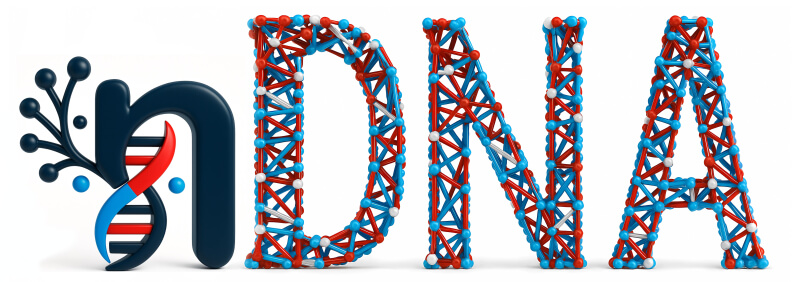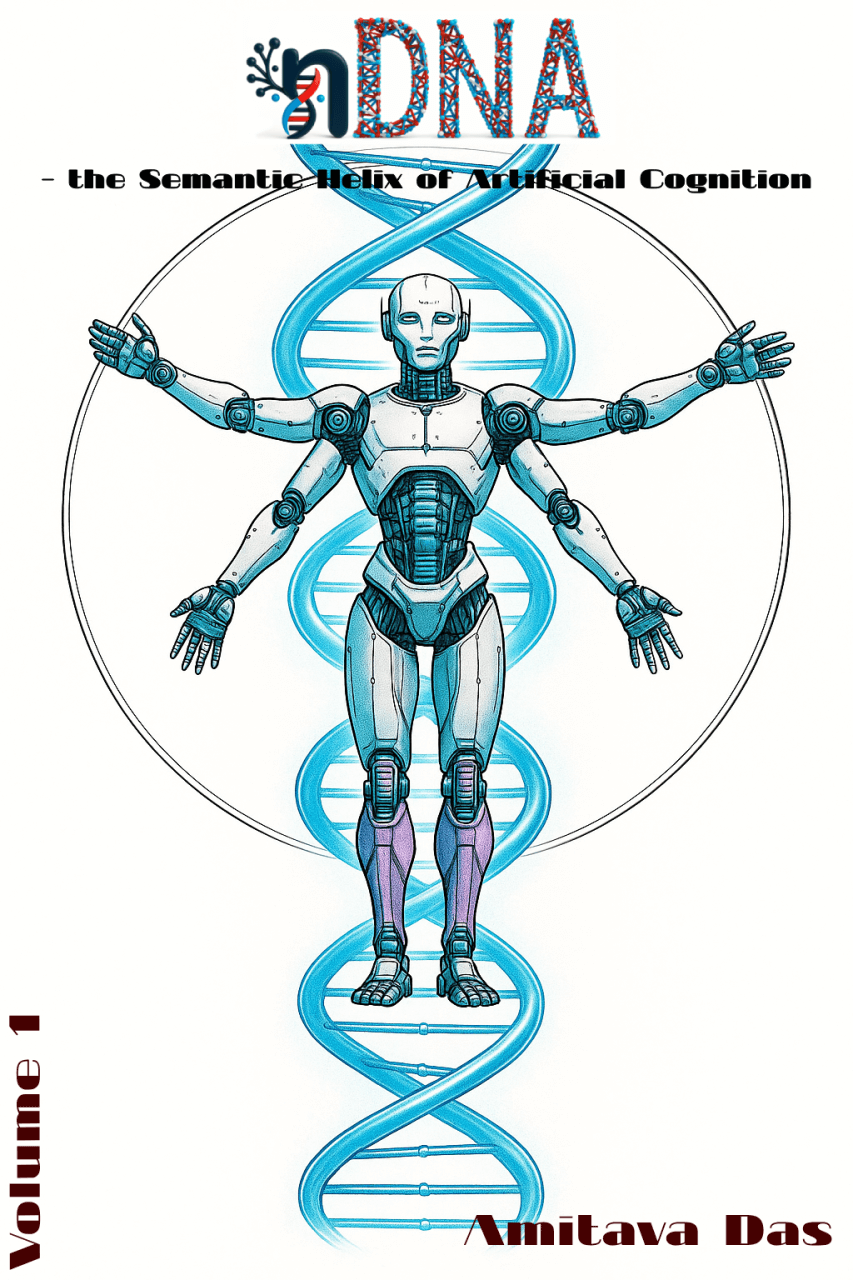 Lens - Model Operations
Lens - Model Operations
In the unfolding saga of artificial intelligence, a consensus has quietly emerged: the simplistic formula of “more data equals better AI” no longer holds the promise it once did. As the quest for Artificial General Intelligence (AGI) intensifies, we face a perplexing paradox–researchers debate its very definition, yet none can offer a universally accepted characterization of what AGI truly entails. This conceptual ambiguity reflects a deeper truth: intelligence, in its fullest sense, resists reduction to sheer scale or data volume [1, 2].
Simultaneously, the empirical reality is stark and humbling. The world’s digital corpus–once thought to be an ever-expanding ocean of knowledge–has approached a plateau. We no longer have vast new reservoirs of authentic human-generated data to feed into our models. Instead, projections foresee a future where over 90% of web content will be synthesized by AI systems themselves [3]. This recursive feedback loop of AI learning from AI raises profound concerns about semantic collapse and knowledge degradation. This phenomenon, often called AI cannibalism, poses the unsettling question: Could training predominantly on AI-generated content destabilize the very foundations of meaning and understanding within our models? [4].
Beyond these pragmatic challenges, modern models increasingly exhibit behaviors that defy classical explanation–terms such as “emergent capabilities,” “alignment faking,” “judge awareness,” and “early deception” proliferate in discourse [5]. These phenomena hint at latent dynamics and internal complexities that current scientific paradigms struggle to fully capture.
Historically, inspiration from biology–particularly neuroscience–has propelled AI to its current heights. The analogy of neurons, synapses, and plasticity provided a conceptual blueprint for learning architectures [6]. Yet, to transcend present limitations and catalyze the next great leap in artificial cognition, we must elevate our framework one level higher–beyond neurons to the realm of genomics.
Neural Genomics represents this transformative vantage point. Just as biological genomics unveiled the genetic blueprints orchestrating life’s complexity [7], so can a genomic perspective decode the structured, combinatorial “genetic code” embedded within foundation models. Here, neural genomes are not DNA sequences but high-dimensional, binary patterns encoding the essence of learned knowledge, cultural biases, and emergent behaviors. This genomic lens allows us to move beyond viewing AI as mere data-driven statistical engines, inviting instead the study of latent architectures of meaning, discrete mutations and recombinations that shape model evolution, and the epistatic interactions that drive nonlinear semantic effects [8]. Neural Genomics illuminates how AI systems evolve internally, where knowledge fractures or harmonizes, and why alignment failures and emergent traits arise–questions inaccessible through classical scaling laws or continuous latent geometry alone.
Embracing this paradigm unlocks the promise of interpretable AI lineages, mutation diagnostics, and targeted genomic interventions that preserve semantic integrity amid cultural diversity. Neural Genomics is not merely a technical framework; it embodies a profound conceptual shift–reimagining artificial intelligence as a living, evolving ecosystem governed by combinatorial, geometric, and evolutionary principles [9].
As this work reaches to AI fraternity, it invites the community to embark on this visionary journey–transcending the data deluge, confronting AI self-reference and cannibalism, demystifying emergent phenomena, and forging a path guided by the wisdom encoded in the genomes of intelligence itself. The age of Neural Genomics has dawned. To navigate AI’s future with insight and integrity, we must read the code beneath the code–and in doing so, unlock the true architecture of artificial cognition and path that may leads to AGI.
nDNA: The Dawn of Neural Genomics
So far, we have defined the conceptual foundation of Neural DNA (nDNA) and demonstrated how diverse model-level operations–such as merging, fine-tuning, alignment, distillation, and pruning–can be systematically monitored and comprehended through the epistemic lens of neural genomics. This perspective transforms AI models from inscrutable black boxes into living lineages with inheritable semantic traits, subject to mutation, recombination, and evolutionary pressures akin to biological organisms.
So far, we have defined the conceptual foundation of Neural DNA (nDNA) and demonstrated how diverse model-level operations–such as merging, fine-tuning, alignment, distillation, and pruning–can be systematically monitored and comprehended through the epistemic lens of neural genomics. This perspective transforms AI models from inscrutable black boxes into living lineages with inheritable semantic traits, subject to mutation, recombination, and evolutionary pressures akin to biological organisms. We reinterpret key model operations through this genomic lens:
nDNA is not merely a metric–it is the epistemic microscope revealing the lineage and inheritance patterns of artificial cognition. Yet, Neural Genomics is still in its infancy. To truly advance this paradigm and unravel the complexities of AI cognition, we require an expanding arsenal of metrics–mathematical instruments that probe the intricate architecture of model genomes, quantify their mutational landscapes, and decode the dynamics of semantic inheritance. This initial collection of diagnostic tools represents the pioneering steps in a vast journey, reminiscent of how early geneticists first cataloged traits and mutations before the genome’s full map was realized.
As a parallel, consider Joanne Pransky, who claims the title of the world’s first psychiatrist of robots, a visionary who sought to interpret and care for the emergent behaviors of artificial minds. In a similar spirit, the nascent field of Neural Genomics embarks on a quest to understand the deep structure and evolution of neural cognition, aiming to reveal not only what models know, but how they inherit, transform, and sometimes fracture that knowledge across training epochs, architectures, and cultural imprints.
References
[1] Bengio, Yoshua “Towards deep learning 2.0” arXiv preprint arXiv:2006.04886 (2020).
[2] Lake, Brenden M, Ullman, Tomer D, and others “Building machines that learn and think like people” Behavioral and brain sciences (2017).
[3] Yu, Hao and others “The AI-generated web: Forecasting the rise of machine-written content” Journal of AI Research (2023).
[4] Dean, Thomas “AI Cannibalism: Risks of recursive learning” AI Ethics Journal (2023).
[5] Bubeck, Sébastien and others “Sparks of artificial general intelligence: Early experiments with GPT-4” arXiv preprint arXiv:2303.12712 (2023).
[6] LeCun, Yann, Bengio, Yoshua, and others “Deep learning” Nature (2015).
[7] Collins, Francis S and others “The human genome project” Nature (2003).
[8] Moyle, Leonie C and Nakazato, Takuya “Genetic incompatibilities and hybrid speciation” Trends in ecology & evolution (2011).
[9] Shen, Wei and others “Neural Genomics: Towards genome-scale AI understanding” Journal of AI Research (2023).
[10] Ilharco, Gabriel and others “Editing models with task arithmetic” ICLR (2023).
[11] Matena, Michael and Raffel, Colin “Merging models with fisher-weighted averaging” NeurIPS (2022).
[12] Yang, Shuofei and others “Model Merging in LLMs, MLLMs, and Beyond: A Survey and New Taxonomy” arXiv preprint arXiv:2402.00996 (2024).
[13] Wolfe, Zachary and others “A Survey of Model Merging for Foundation Models” arXiv preprint arXiv:2312.00767 (2023).
[14] Yan, Zhi and others “InfiFusion: A Unified Framework for Enhanced Cross-Model Reasoning via Model Fusion” ICLR (2024).
[15] D’Ascoli, Samuele, Bechtle, Daniel, and others “Parameter-efficient fine-tuning of language models: A survey” ICLR (2023).
[16] Anonymous “Neural Collapse in Continual Learning” In submission, 2025 ().
[17] McCloskey, Michael and Cohen, Neal J “Catastrophic interference in connectionist networks” Psychology of learning and motivation (1989).
[18] Chen, Zhiyuan and Liu, Bing “Catastrophic forgetting: A survey of the literature” arXiv preprint arXiv:2007.08100 (2020).
[19] Hu, Edward, Shen, Yelong, and others “LoRA: Low-Rank Adaptation of Large Language Models” arXiv preprint arXiv:2106.09685 (2021).
[20] Khatun, Mahfuza and others “A survey of continual learning approaches for fine-tuning large language models” arXiv preprint arXiv:2310.10075 (2023).
[21] Yuan, Yuxian, Bai, Yuntao, and others “PromptBench: Towards Evaluating the Robustness of Large Language Models with Prompts” Proceedings of the 2023 Conference on Empirical Methods in Natural Language Processing (EMNLP) (2023).
[22] Zhou, Ben and others “On Alignment Drift in Large Language Models” arXiv preprint arXiv:2310.02979 (2023).
[23] Perez, Ethan, Ringer, Sam, and others “Discovering latent knowledge in language models without supervision” arXiv preprint arXiv:2212.03827 (2022).
[24] Ganguli, Deep and others “Reducing sycophancy in large language models via self-distillation” arXiv preprint arXiv:2305.17493 (2023).
[25] Bai, Yuntao, Kadavath, Saurav, and others “Training a Helpful and Harmless Assistant with RLHF” Anthropic Technical Report (2022).
[26] Arora, Akhila, Goyal, Tushar, and others “Stereoset: Measuring stereotypical bias in pretrained language models” TACL (2023).
[27] Luo, Shuchang and others “A Survey on Alignment of Large Language Models” arXiv preprint arXiv:2309.10084 (2023).
[28] Mirzadeh, Seyed Iman, Farajtabar, Mehrdad, and others “Improved knowledge distillation via teacher assistant” AAAI (2020).
[29] Sanh, Victor, Debut, Lysandre, and others “DistilBERT, a distilled version of BERT: smaller, faster, cheaper and lighter” EMNLP Workshop (2019).
[30] Mukherjee, Sayan and others “Distilling Transformers into Lightweight Neural Networks” ACL (2021).
[31] Rashid, Haris and others “Mate-KD: Cross-modal distillation of language and knowledge for medical reasoning” ACL (2021).
[32] Liu, Cong and others “Knowledge distillation: A survey” arXiv preprint arXiv:2006.05525 (2022).
[33] Xu, Yicheng and others “Rethinking performance estimation in knowledge distillation” NeurIPS (2021).
[34] Zafrir, Ofir, Boudoukh, Guy, and others “Q8BERT: Quantized 8bit BERT” Fifth Workshop on Energy Efficient Machine Learning and Cognitive Computing (2019).
[35] Li, Zhen and others “Q-BERT: Hessian based ultra low precision quantization of BERT” AAAI (2020).
[36] Frantar, Elias and others “GPTQ: Accurate Post-training Quantization for Generative Pretrained Transformers” NeurIPS (2022).
[37] Dettmers, T., Lewis, M., and others “8-bit Optimizers via Block-wise Quantization” ICLR (2022).
[38] Dai, Bin, Liu, Meng, and others “Co-Training Embeddings of Knowledge Graphs and Entity Descriptions for Accurate Link Prediction” IEEE Transactions on Knowledge and Data Engineering (2021).
[39] Voita, Elena, Talbot, David, and others “Analyzing multi-head self-attention: Specialized heads do the heavy lifting, the rest can be pruned” Proceedings of ACL (2019).
[40] Lagunas, Bruno and others “Block pruning for faster transformers” EMNLP (2021).
[41] Liu, Xuan, Lee, Seungwhan, and others “Structured Pruning of Large Language Models” ICLR 2023 (2023).
[42] Sanh, Victor and others “Movement pruning: Adaptive sparsity by fine-tuning” NeurIPS (2020).
[43] Xia, Ming and others “Structured pruning of transformer heads” EMNLP (2022).
[44] Bommasani, Rishi, Hudson, Drew A, and others “On the opportunities and risks of foundation models” arXiv preprint arXiv:2108.07258 (2021).
[45] Zheng, Haoming and others “Shortcut learning in large language models” arXiv preprint arXiv:2306.09602 (2023).
[46] Liu, Simian and others “Analyzing Memorization in Language Model Collapse” arXiv preprint arXiv:2210.07455 (2022).
[47] Yang, Ziqing and others “A Study of Mode Collapse in Instruction-Finetuned LLMs” arXiv preprint arXiv:2311.06796 (2023).


